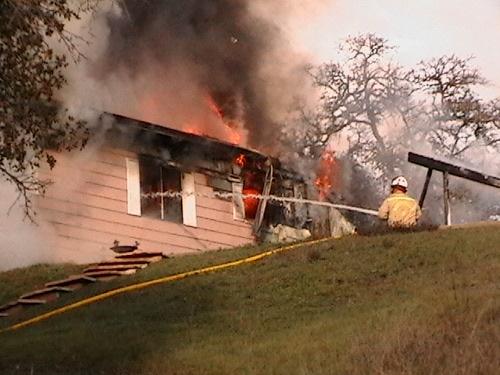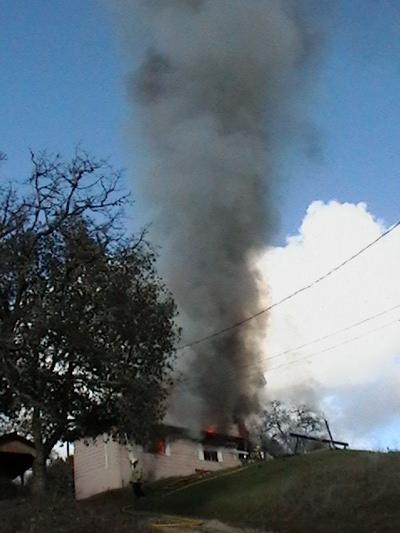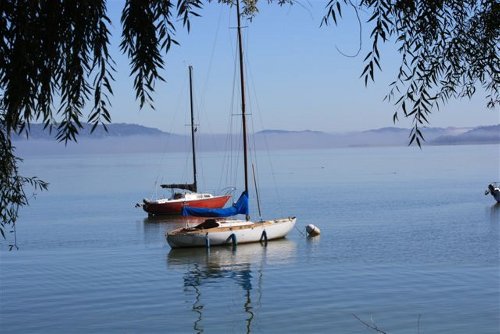
Golden Fish is the main character in author and artist Diane Arruda's Dream River Adventure Series. Image courtesy of Diane Arruda.
LAKEPORT – “There are some dreams forgotten and some dreams remembered, but then there are those special dreams that inspire!”
That's the opening line from “The Ancient One: Once Undiscovered is NOW Discovered,” the latest children's book from local author Diane Arruda.
Arruda has taken her dream to the next step with the release of “The Ancient One,” the second book in her “The Dream River Adventure Series.”
Dreams are the focus of the series, which will consist of a total of five books. The story is meant to appeal to people of all ages but is placed in the genre of children’s books.
Arruda, a mother of four grown children and a grandmother of five, plans to have the whole series written by the end of April. But her inspiring dream has been floating in her mind for a few decades, and has been part of a journey, she said.
“The stories have manifested through a fantastic dream I had when I was 9 years old,” she said. “It was a dream about a beautiful, sparkling river located in a lush colorful forest. Small, beautiful but very unusual water creatures lived in it. I met others just like the first water angel and together they showed me new places and new things to do in the river.”
She added, “It was magical.”
Her dreams also were influenced by a childhood reading experience, when she read a children's book from the 1800s that featured “water babies,” magical children that lived underwater.
Her books feature “water angels,” which represent love, joy, adventure and understanding.
Arruda's dream river was finally put into words five and a half years ago when her childhood dream suddenly returned to her one day.
“I saw, quite vividly in my mind’s eye, the image of a water angel swimming among cattails. It was a beautiful sight. It was an incredible experience and it signaled to me that it was time to change my energy and finally write the story,” said Arruda.
She had recently suffered the loss of her career and it took months for her to recover. But now she believes that losing her job was a turning point in her life, and that her true purpose in life now is to write and paint what she imagines.
The main character of the stories is Golden Fish, who correlates to Arruda herself. Readers were first introduced to Golden Fish in Arruda’s first published book, “The Undiscovered River: Golden Fish and a True Dream,” that was published early last year, several months before the August release of the second book.
Arruda couldn’t control her urges to paint her story, and she started painting just as soon as she started writing. Being a professional artist and having a degree in art history greatly contributed to her ability to visually depict her magical dream river, she said.
Her acrylic paintings are very vivid and bright, just as she described her dream. Her desire to use her own illustrations for her writing made it difficult to get her books published, though. However, she would not trust the imagery to any other artist because she feels she is the only one who can truly depict it.
“I was the happiest I had been in a very long time,” Arruda said of writing the series. “The stories and the artwork started a new chain of life events that began to give me a clearer picture of the person I was becoming on the inside versus the one I was slowly leaving behind on the outside.”
The adventure begins when Golden Fish truly believes in a dream she had of a beautiful, undiscovered river. She lives in The Great Pool, which Arruda said represents the way the world thinks and acts in the present time.
Because she truly desires to learn more about life beyond the Great Pool, Golden Fish is given an invitation to journey through a secret passageway into the Undiscovered River. This event in the story has major significance to Arruda’s life.
“It represents the beginning of my own determined desire to reeducate myself by reading who, what, when, where and the why of past and current thinkers in psychic growth and understanding,” she said. “This personal education became my passageway to the new way of looking at things.”

Diane Arruda's children's books include Golden Fish's visit to the Great Storyteller. Image courtesy of Diane Arruda.
Golden Fish encounters many of the same feelings and similar experiences as Arruda has had in her own life, such as having a desire to know more and taking action to educate oneself.
“Growing up, getting married, divorced, educated and leading careers are experiences that are a part of that time,” she said. “I can now take my life’s journey through Golden Fish and her dream river adventures where happiness and fulfillment are the very important words.”
Golden Fish decides to leave the Great Pool and discover the world beyond, never to return again.
“The Undiscovered River,” the first book, leads Golden Fish to realize that there are five Living Codes once she makes it out of the Great Pool. Her discovery stems from a meeting with the Magnificent Whirlpool, who is the source of all that lives in the Undiscovered River and beyond.
After Golden Fish tells her friend about the second true dream, she discovers the First Living Code. Her friend helped her by telling her that the code is that “all living things are connected and share the power of source. Arruda describes “source” as energy.
“The Ancient One,” the second book, is based on Golden Fish’s journey to discover the Second Living Code.
Many overarching ideas can be interpreted religiously, but Arruda did not intentionally reflect any organized religious sensitivities.
“The stories reflect a personal desire to go beyond the accepted ways of thinking about one’s life and personal expectations and take a deeper look at the world around them,” she said.
The first two books can be purchased locally at Wild About Books, Watershed Books and Catfish Books, or online at Amazon.com for $12.95 each. They are each 50 pages in length including the beautiful artwork.
The third book, “Dream Keepers” will be available by the end of January this year. Because it is longer than the first two, it will be sold for $13.95.

Neb, a water angel, is shown in the Great Pool. Image courtesy of Diane Arruda.
“Dream Keepers,” is a turning point in Golden Fish’s journey. She must return to the Great Pool to find the Third Living Code. The last two books in the series will be about discovering the fourth and fifth living codes.
The search for the codes is a search for many of life’s basic questions like: “Why am I here?” Where should I be now, at this time in my life?” and “Who am I?”
“I've got a lot of work to do,” said Arruda.
But, she added, “It's the most fun I've ever had.”
Visit Arruda’s Web site, www.goldenfishbooks.com , and the publisher, Eloquent Books’ Web site, www.eloquentbooks.com/TheUndiscoveredRiver.html , for more information about The Dream River Adventure Series.
E-mail Tera deVroede at This email address is being protected from spambots. You need JavaScript enabled to view it.. Follow Lake County News on Twitter at http://twitter.com/LakeCoNews and on Facebook at http://www.facebook.com/pages/Lake-County-News/143156775604?ref=mf .

The cover of Diane Arruda's first book,

 How to resolve AdBlock issue?
How to resolve AdBlock issue? 


















